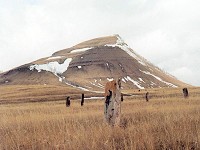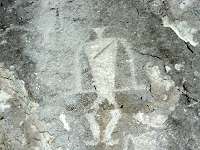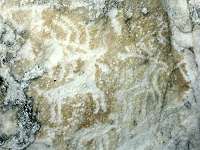| Origin & Development | |
|
Legends & Fairy tales • Earth's Crust Thickness • Underwater Relief • Landscapes • History & Formation • Seismic Activity • | |
| History of Lake Baikal | |
|
History of Explorations • Inhabitants & Settlers • First maps of Baikal • Archaeological Sites • | |
| Lake Baikal Climate | |
|
Introduction • Fogs • Winds & Waves • Ice Conditions • | |
| Fauna & Vegetation | |
|
Mammals • Baikal seal - Nerpa • Ichthyofauna • Invertebrates • Vegetation • | |
| Water of Lake Baikal | |
|
Colour • Transparency • Temperature • Pressure • Depth • Currents • Budget • Chemical Composition • Pollution • | |
| Recreational Areas | |
|
Circumbaikal Railway • Peschanaya Bays • Olkhon Island • Chivirkuysky Gulf • Wooden Irkutsk • Trans-Siberian Railway • | |
| People of Lake Baikal | |
|
People of Siberia • Buryat nation in Baikal • Russians in Baikal • | |
|
| |
Archaeological sites of Lake Baikal
One of the masterpieces of early Scythian art is the Korsukovsky hoard discovered in 1983. Its former owner saved everything valuable he had in a bronze pot. The Ivolginskoye site, the remains of an ancient town with the neighboring burial plot, is considered to be the standard for investigation of culture, architecture and everyday life of the II-I century B. C. The town residents engaged in cattle-breeding and agriculture, the smelting of cast iron and bronze and the forging of iron. "Khun" sites are replaced by tent-like graves, located in groups on Olkhon Island and on the shores of Baikal. The tent-like graves, made of sandstone, arranged in a circle and equally sloping from the centre of the burial site, remind one of a yurt (or a tent) used by nomads. They are thought to have been left by Kurikans who lived in the VI-XI century A. D. For self protection the Kurikans had to build fortified towns and defensive walls, some of which still exist. The sites of these towns were first discovered in the XVII-th century by explorers. Formal scientific archaeological exploration of Baikal's ancient sites began in the XlX-th century. | |||


